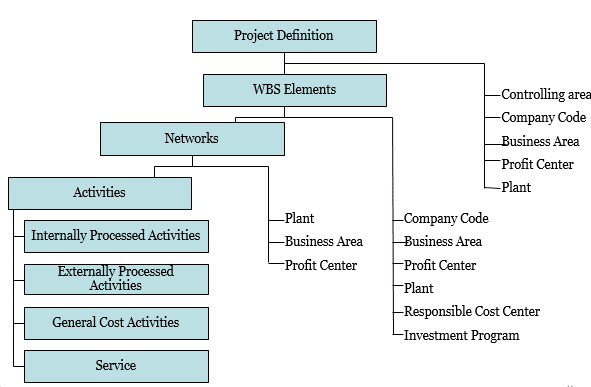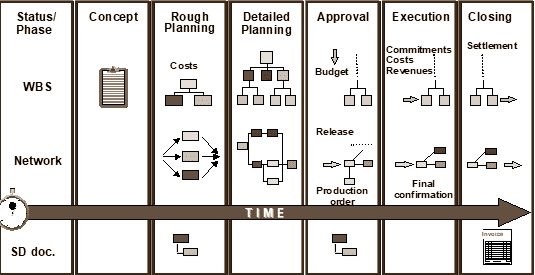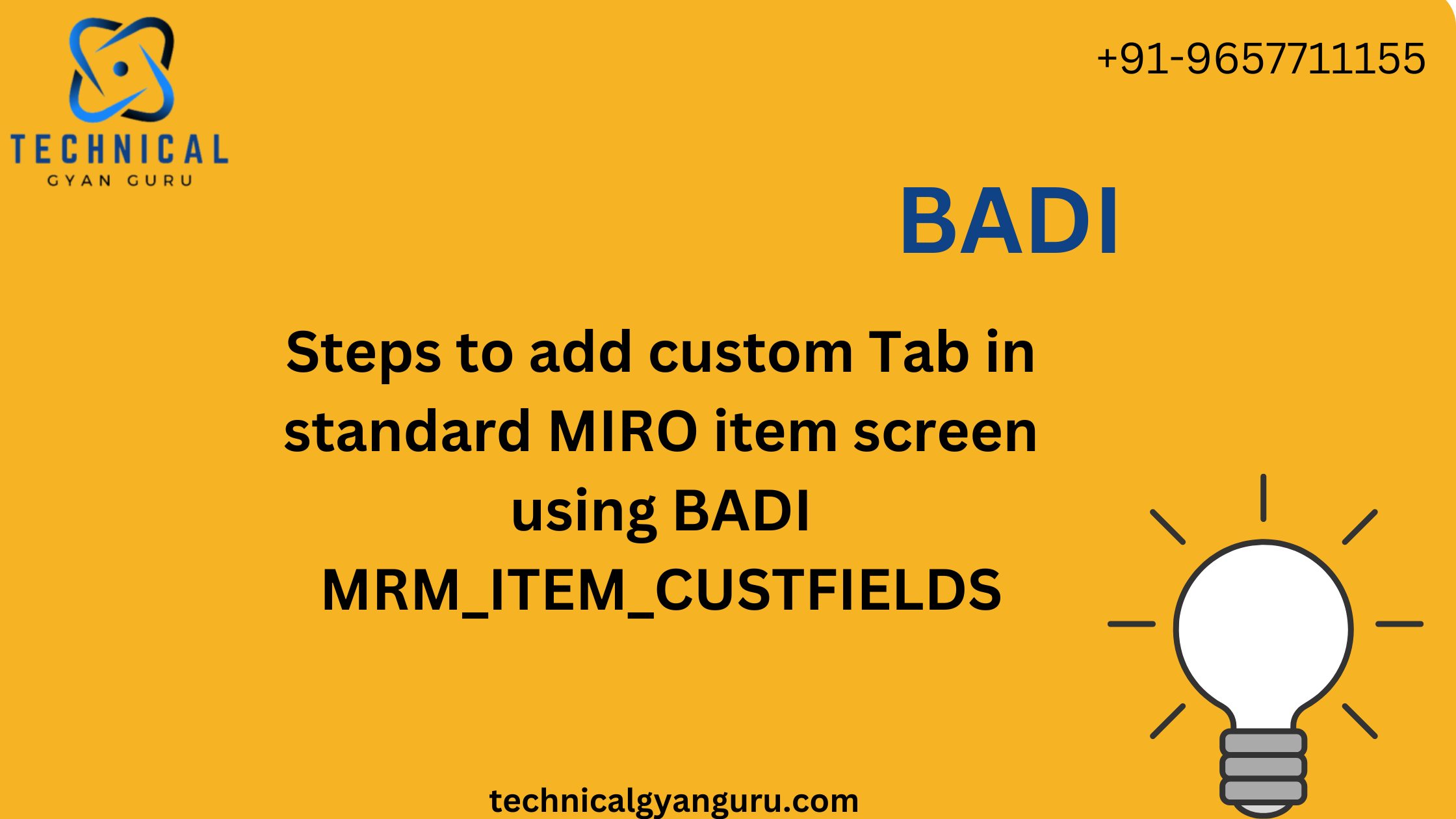SAP Project Systems more frequently referred to SAP PS, is an all-encompassing project management system designed to manage all aspects that are part of a project within the organisation. It seamlessly integrates with different SAP components of the program and can handle large- as well as small-scale projects management efficiently.
Introduction of SAP Project System (SAP PS)
SAP Project System (PS) belongs of SAP’s Project and also Portfolio Management service. Project Systems assists take care of projects throughout the whole entire project lifecycle, from the production of a task to the preparation of comprehensive plans as well as, project execution and also conclusion.Due to its own strict integration with SAP’s Finance as well as Logistics modules, the SAP PS Module may be used specifically for large and sophisticated ventures such as building, development, company and also, financial investment projects, as well as with all markets.
Some of the durability’s of SAP PS as a project monitoring application is that it could be integrated along with other SAP elements as shown in the image listed below, along with along with external venture management devices like Primavera and Microsoft Project from non-SAP Application

What are actually the SAP PS Module Basic Functions?
The SAP PS Module Basic Functions reviewed in this blog are as follows:.
- Project Structure: Work package deals could be made and exemplified in projects using Work Breakdown Structure (WBS) Elements and also Network Plans.
- Time Schedule: The task time routine can easily assist tracking of the activities of the workers and also the action in the tasks operate package deals (WBS aspects).
- Cost and also Revenue Planning: The price and also revenue preparation can be done for the action in work deals (WBS elements).
- Budgeting: Allows budgeting of the jobs and the intervene job deals (WBS factors) of the ventures to assist budget administration, as well as to ensure budget plan supply managements.
- Project Progress Analysis: Functionality to support study of show business of the venture, the development of the project’s actions, as well as the task’s condition.
- Reporting: The arrangement of lots of records based on ordered, economic (G/L Account as well as pipes thing), product, resource, and also task development.
What is the project system module of SAP?
Project Structuring
It is critical to develop coherent structures inside the system that serve as the foundation for project data planning and analysis in order to properly exploit SAP Project Systems functionalities. Work Breakdown Structures (WBS) and Networks are the two basic structures provided by SAP Project System. The decision between these structures is determined by specific business needs.
A Work Breakdown Structure (WBS) includes features including cost planning, document account assignment, revenue planning, invoicing, budgeting, material stock management, period-end closure operations, and numerous reporting options. Network structures, on the other hand, include characteristics such as scheduling, capacity planning, project activity confirmation, material need planning, material procurement and delivery, external service procurement, network costing, and period-end closing operations.
Time Scheduling
In SAP Project Systems, scheduling is dependent on whether WBS Elements or networks are used.
Scheduling WBS Elements is a manual operation that requires the input of anticipated dates for each WBS Element. Because WBS components do not have inherent linkages, changing the date of one element has no effect on the scheduled dates of other components at the same level.
Scheduling with networks, on the other hand, is a fully automated procedure in SAP PS. The system computes planned dates based on pre-existing correlations between network activity. Start-Start (SS), Start-Finish (SF), Finish-Start (FS), and Finish-Finish (FF) relationships specify how activities are linked.
Scheduling in SAP PS occurs both forward and backward, producing the earliest and latest dates. Transactions provide access to the Planning Board.
Cost Planning
Cost planning in SAP PS involves two primary techniques: manual cost planning in the WBS and automatic cost planning using networks and assigned orders.
Manual Cost Planning in the WBS:
- Overall planning allows manual entry of costs for each WBS element, with the option to break down figures by fiscal year.
- Detailed planning involves cost and period-based planning.
- Unit costing utilizes a profile to enter quantities (materials, internal activities, external services) for each WBS element, based on cost elements.
- Easy cost planning offers a user-friendly tool to plan costs by cost elements within a quantity structure.
Automatic Cost Planning using Networks and Assigned Orders:
- Costs are automatically calculated based on resource requirements for network activities and operations.
- Advantages include the ability to copy plan data to new projects, automatic shifting of cost planning with rescheduled activities, and planning costs for network activities by cost element and period.
Revenue Planning
Revenue planning in SAP Project System involves manual revenue planning methods, billing plans, and sales pricing functionalities.
Manual Revenue Planning:
- Hierarchical Revenue Planning: Enables revenue planning by WBS billing element and year. However, distribution of revenues to individual periods within a fiscal year is not possible with this method.
- Detailed Revenue Planning: Allows revenue planning by revenue element for each WBS billing element. Values can be assigned to specific periods within a fiscal year, either on an annual basis or for each period.
Billing Plan:
- A billing plan is used to schedule payment requests or invoices affecting sales to customers.
- Planned revenues are recorded in the revenue element defined in the planning profile.
- Billing plans for WBS elements can be assigned in various work breakdown structure processing transactions and simulation versions.
- Data from billing plans can be updated automatically to revenue planning for the assigned WBS billing element, facilitated through the planning profile of the project.
Sales Pricing:
- A PS functionality facilitating the determination of prices for work to be performed during a project, based on project planning data.
- Sales pricing data can be stored as an SD quotation or transferred to a billing plan within the project.
- Multiple quotations can be created based on sales pricing if needed.
In summary, revenue planning in SAP PS encompasses hierarchical and detailed manual planning, billing plans for scheduling payment requests, and sales pricing functionality that determines prices based on project planning data. The integration of these methods provides a comprehensive approach to managing and planning project revenues.
Material Planning
Material planning in SAP PS involves various methods for material assignment, including manual assignment, BOM transfer, using the Internet Catalog, and utilizing project stock.
Material Assignment:
- Manual Assignment: Involves manually assigning material components to network activities through network maintenance transactions.
- BOM Transfer: WBS BOMs can be created based on material BOMs and transferred to projects using the BOM transfer transaction, ensuring correct automatic assignment.
- From the Internet Catalog: The OCI Interface allows manual assignment of material components, calling an external catalog for material selection.
Project Stock:
- Usage of Project Stock: Project stock can be defined in the project profile, and its usage can be modified at the project definition level.
- Tree Options for Project Stock:
- No Project Stock: Materials are stored in plant stock without creating individual stock segments for the project.
- Non-Valuated Project Stock: Creates a separate stock segment for one or more WBS elements, with material movements not valuated.
- Valuated Project Stock: Held in separate stock segments with both quantity and value, impacting the balance sheet.
Requirements Grouping:
- Various Grouping Methods: Requirements can be grouped within a project (easiest with “Automatic requirements grouping”), across various projects, or based on MRP group of components.
- Grouping at WBS Level: Components can be grouped within a WBS element, and activities assigned to WBS elements are then grouped.
Budgeting
In SAP Project System, budgeting is a critical function for monitoring allocated funds and preventing budget overruns. The approved cost structure for project execution is documented by distributing the budget to WBS elements, typically during the approval phase before project execution begins.
Project reporting in SAP PS facilitates the evaluation of budget values alongside planned and actual costs. It’s important to note that budgets can only be assigned to WBS elements, not networks. However, costs assigned to networks or network activities are considered during availability control.
Key budgeting functions in SAP PS include:
- Original Budget:
- Established using transaction CJ30, allowing for an overall budget or distribution by year based on the configured budget profile.
- Budget Updates:
- Involves budget supplements (increasing the project budget) using transactions CJ36 and CJ37.
- Budget returns (reducing the current budget) are managed through transactions CJ35 and CJ38.
- Budget transfers enable the transfer of funds between WBS elements, even across different projects.
- Budget Release:
- Authorized through transaction CJ32, this step is an additional measure to release the budget for a project, requiring execution before project commencement if this functionality is utilized.
- Budget Carry-forward:
- Enabled by transaction CJCO, budget carry-forward allows the transfer of unutilized budget from one fiscal year to the next.
- Availability Control:
- An essential step in the budgeting process, availability control in SAP PS checks the budget against planned, committed, and actual costs.
- This functionality prevents budget overruns by identifying potential issues before they occur, with configurable options to align with specific business requirements.
In summary, SAP PS budgeting involves establishing an original budget, managing updates through supplements, returns, and transfers, releasing budgets when necessary, carrying forward unutilized funds, and implementing availability control to prevent budget overruns.
Material Procurement
The SAP PS module seamlessly integrates with MM (Materials Management) through networks, facilitating the automatic creation of purchasing data (reservations and purchase requisitions) in the MM module to meet project requirements. Several procurement processes are available:
Direct Procurement for Non-Stock Items:
- Items with Item Category “N – Non Stock” are procured directly by the network activity, generating purchase requisitions.
- Two procurement types are possible: purchase requisition for the network and third party procurement.
Procurement via MRP for Stock Items:
- Items with Item Category “L – Stock Item” are procured using Requirements Planning, creating a reservation for the required material upon saving.
- MRP monitors stocks and generates procurement proposals for purchasing and production.
- Procurement elements for requirements planning include planned orders or, for external procurement, purchase requisitions.
Advance Procurement:
- Used for critical components with long and unreliable delivery times, purchased even before network activities are created.
- Applicable only with sales orders or project stock.
- Two scenarios for advance procurement:
- Planned Independent Requirements: Used for assemblies requiring early production. MRP generates a planned order leading to a production process, with the material delivered to stock for later consumption by the final network activity.
- Preliminary Purchase Requisition: Used for assemblies requiring early ordering. The system generates a purchase requisition, initiating a purchasing process. The material is delivered to stock and later consumed by the final network activity.
Integration with Other SAP Modules:
SAP PS excels due to its integration with different SAP R/3 applications, including HCM, SD, PP, PM, FICO, and IM.MM, and a myriad of R/3 applications. This allows it to efficiently organize and manage project-related tasks across different departments while ensuring the accuracy of data across projects in real-time.
SAP PS Process Flow
The SAP PS Module’s high-level process flow is shown below.

Conclusion:
SAP Project Systems (PS) is an efficient project management software designed to help facilitate effective project execution throughout an organization. With its broad capabilities that seamlessly integrate the other SAP modules and its structured method of organizing and managing the project, SAP PS provides businesses of all sizes with a vital tool. When it comes to completing complex or small projects within budgetary constraints – small or big undertakings, SAP PS is a powerful tool that provides everything needed to ensure success in managing projects, controlling costs, and timely completion.
SAP Project System (PS) serves as an integral part that is part of SAP ERP, aiding project managers with managing their project planning, resource allocation, and cost control, which ultimately leads to the successful execution of projects within specified timeframes and budgetary limitations







